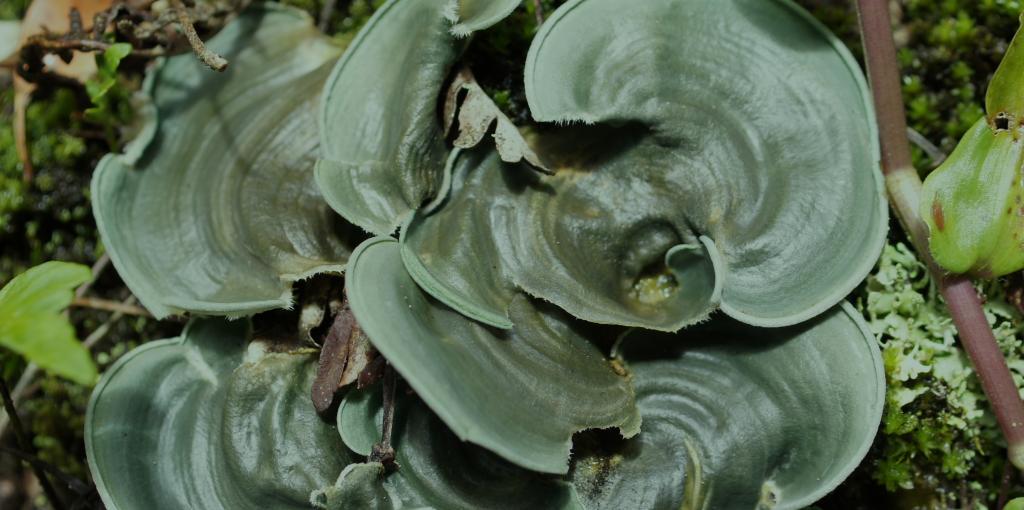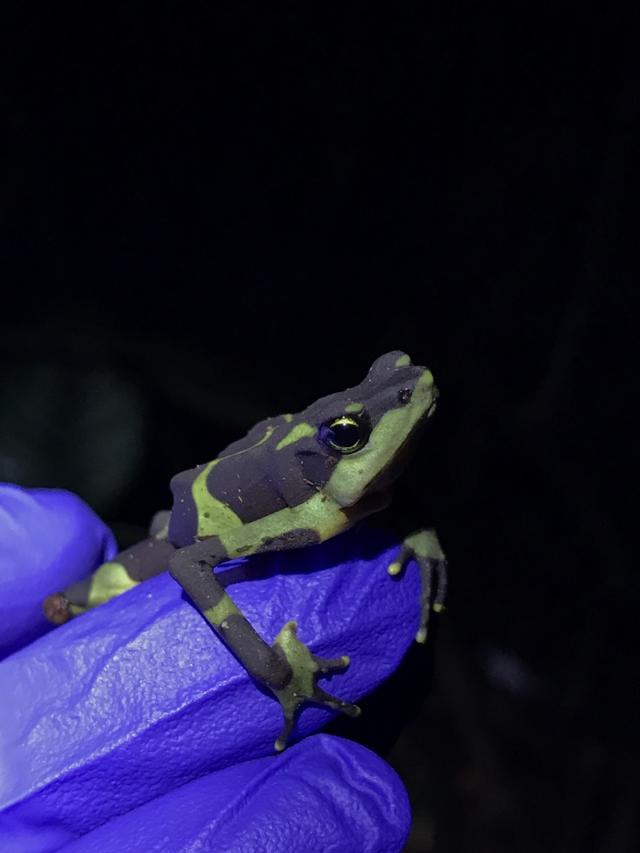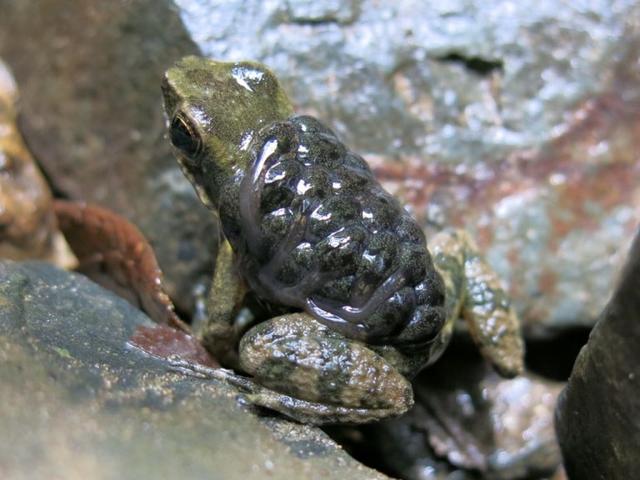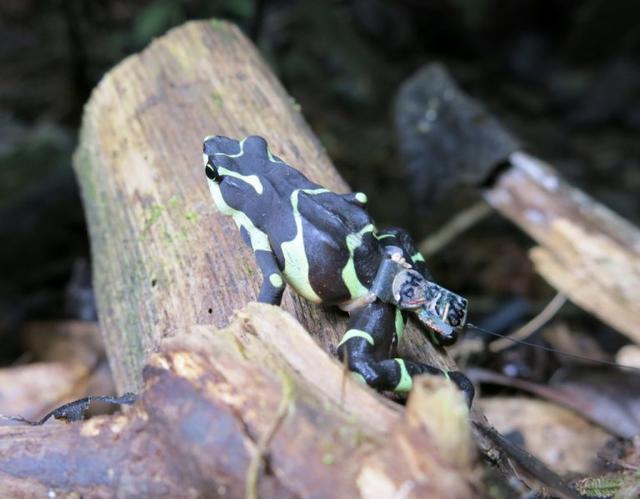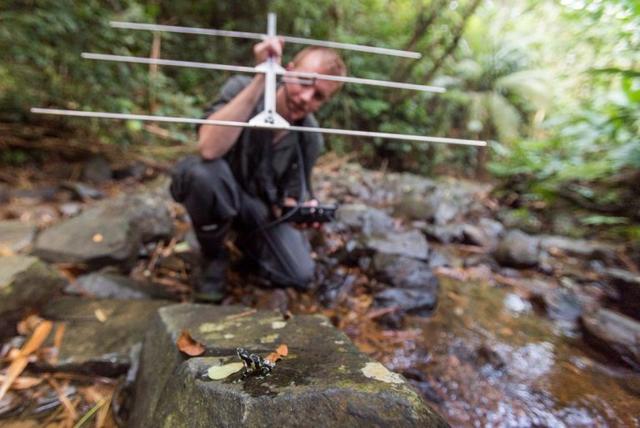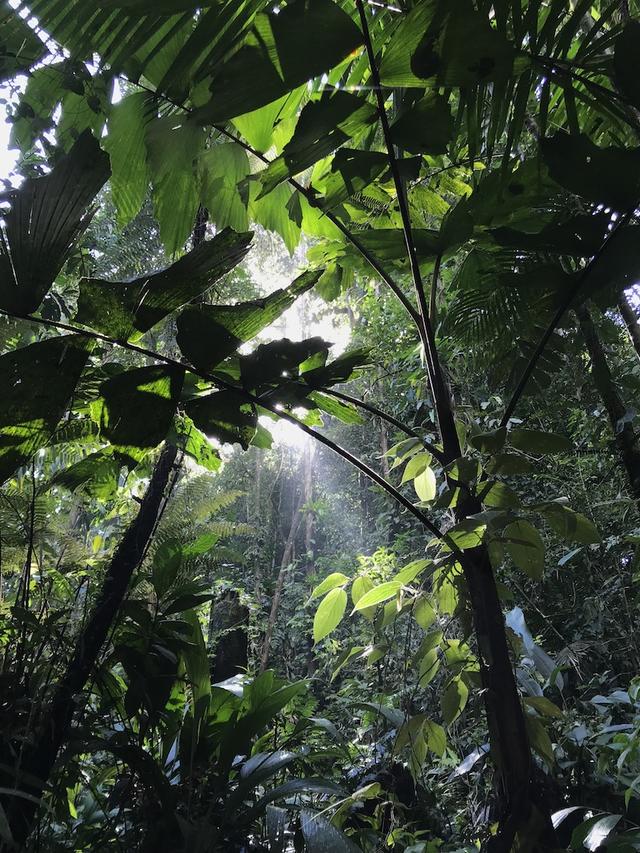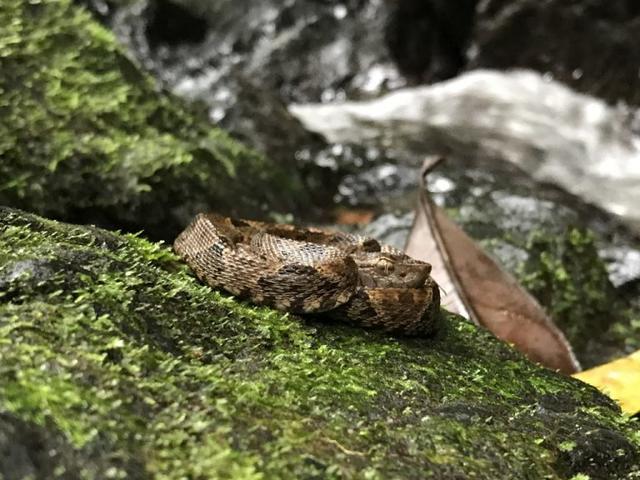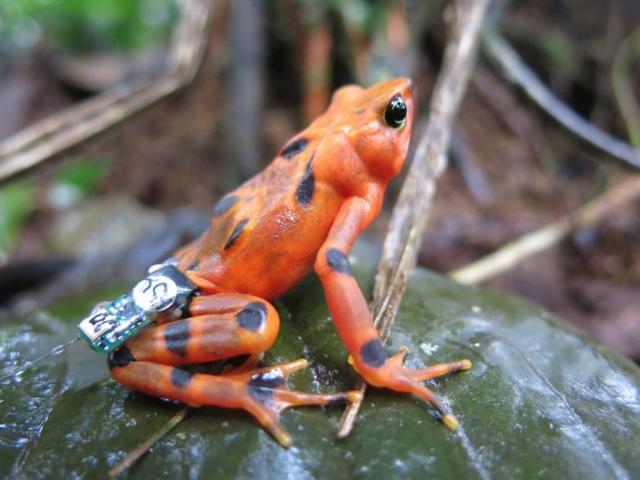Admission CTAs
Reintroducing lost frogs back into the Panamanian rainforest
Graduate Student Research:
Amphibian populations in Panama vanished seemingly overnight. The Panama Amphibian Rescue and Conservation Project are reintroducing lost frogs back into the wild.
by Blake Klocke, PhD Student in Environmental Science and Policy, George Mason University
Edited by Aikwan Chong
This project was a joint effort of several organizations. Please see earlier versions of this story:
http://amphibianrescue.org/2018/01/18/variable-harlequin-frog-release-trials-begin-in-panama/
The deadly amphibian chytrid fungus is associated with declines and extinctions of more than 200 species of amphibians globally. In Latin America, Harlequin frogs belonging to the genus Atelopus have undergone dramatic population declines due to the amphibian chytrid fungus. Several species of Harlequin frogs have not been observed for more than 20 years and may be extinct. Six species of Harlequin frogs were once found in Panama. The Chiriqui Harlequin frog (A. chiriquiensis) has not been observed since 1996, and the Panamanian golden frog (A. zeteki), the national symbol of Panama, has been extinct in the wild since 2009 but populations exist in captivity. Both species are now considered to be part of “Panama’s lost frogs”. In an effort to avoid further amphibian extinctions in Panama, the Panama Amphibian Rescue and Conservation Project was established to secure populations of amphibians most threatened by chytrid through captive breeding.
At the Panama Amphibian Rescue and Conservation Project, populations of frogs on the edge of existence are managed in captivity, which is a lot of work. Panamanian workers trained in amphibian captive husbandry take care of more than 1,000 adult frogs daily. A typical day includes: cleaning tanks, feeding frogs, rearing invertebrates – crickets, fruit flies, and spring tails – for food, and of course taking care of tadpoles and post metamorphic individuals in the most delicate stages. The project has successfully managed captive populations of some of the most vulnerable species in Panama for nearly 10 years. These efforts have produced hope that one day species staying afloat through captive breeding will successfully be reintroduced back into the wild as we learn methods to mitigate the disease.
Last May, we began our first release trial with the Limosa Harlequin frog (Atelopus limosus) in central Panama. Founding populations of the Limosa Harlequin frog were collected in 2008 and 2010, as chytrid arrived at their location. A total of 90 first generation captive bred Limosa Harlequin frogs were released. We investigated whether different survival rates would exist between two release treatments – a “soft” release and a “hard” release. The “soft” release involved 30 frogs that were placed in mesocosms at the release site one month before the official release. Smithsonian scientists and collaborators sampled the microbiome during this month to determine how the skin microbial community changed from captive conditions to the wild, and how it may influence the susceptibility of the frogs to chytrid. The remaining 60 individuals in the “hard” release treatment were simply released without any prior exposure to the environment. Answering the question of whether or not survivorship is affected by prior environmental exposure was a priority of ours.
To understand how far the frogs disperse after release we equipped 16 individuals with tiny radio transmitters weighing 0.31 grams. Every day for nearly 2 months, I hiked through the Panamanian rainforest spending hours searching for these endangered individuals. The beep of the radio transmitter picked up by the antenna which I held would guide me in the direction of each frog. Upon locating a frog we would take GPS coordinates and once a week a swab was taken to test for chytrid. The series of swabs taken have provided us with data on chytrid infection post release. Some days it was easier to find the frogs than others, occasionally individuals would be visibly sitting on vegetation and other days they would be on steep muddy slopes or under a hornet’s nest. In July of this past summer, the radio tracking portion of the study was complete, and throughout this release trial we learned a lot of valuable information to apply towards future releases.
In January 2018, we began another release trial with the Variable Harlequin frog (Atelopus varius). This time 500 individuals were released, including 30 equipped with radio transmitters. Several temperature loggers were placed throughout the release site because a primary factor influencing susceptibility to chytrid is environmental temperature. The chytrid fungus fairs poorly above 77º F and above 82º F it fails to grow, so our hope is to identify climatic refuges that are ideal locations to reintroduce frogs. The knowledge we gain from these reintroduction trials will pave the way for stabilizing Panama’s most threatened amphibians in wild with the assistance of captive breeding.
